|
Books Should Be Free Loyal Books Free Public Domain Audiobooks & eBook Downloads |
|
|
Books Should Be Free Loyal Books Free Public Domain Audiobooks & eBook Downloads |
|
Religion |
|---|
|
Book type:
Sort by:
View by:
|
By: St. John Chrysostom | |
|---|---|
 Homilies on Philippians
Homilies on Philippians
The Epistle to the Philippians, is a letter written by St. Paul the Apostle and Timothy to the clergy of Philippi. It is included in the New Testament of the Bible. Philippi is a city in Macedonia, a city that is a colony, as Luke says. It there that a seller of purple was converted, a woman of uncommon piety and heedfulness. There also the ruler of the synagogue believed, and Paul was scourged with Silas. This commentary is composed of a serious of homilies delivered by St. John Chrysostom, the golden-mouthed preacher of Constantinople. - Summary by ancientchristian | |
 Homilies on Colossians
Homilies on Colossians
"Holy indeed are all the Epistles of Paul: but some advantage have those which he sent after he was in bonds: those, for instance, to the Ephesians and Philemon: that to Timothy, that to the Philippians, and the one before us: for this also was sent when he was a prisoner,… "But why do I say that these Epistles have some advantage over the rest in this respect, because he writes while in bonds? As if a champion were to write in the midst of carnage and victory; so also in truth did he. For himself too was aware that this was a great thing, for writing to Philemon he saith, “Whom I have begotten in my bonds... | |
 St. John Chrysostom on First Corinthians, Volume 1
St. John Chrysostom on First Corinthians, Volume 1
The First Epistle to the Corinthians is attributed to St. Paul the Apostle and a co-author named Sosthenes, and is addressed to the materially wealthy Christian church in Corinth. The letter can be divided as follows: 1) Thanksgiving 2) Division in Corinth 3) Immorality in Corinth 4) Difficulties in Corinth 5) The Doctrine of the Resurrection 6) Closing Remarks . In general, the letter is rich in instruction and covers many relevant issues for Christians today. This collection of St. John Chrysostom homilies on the letter gives us a chance to hear one of the greatest minds of the early church expound on its contents. - Summary by ancientchristian | |
 Homilies on Hebrews
Homilies on Hebrews
Let us then stretch our mind towards Heaven, let us be held fast by that desire, let us clothe ourselves with spiritual fire, let us gird ourselves with its flame. No man who bears flame fears those who meet him; be it wild beast, be it man, be it snares innumerable, so long as he is armed with fire, all things stand out of his way, all things retire. The flame is intolerable, the fire cannot be endured, it consumes all. With this fire let us clothe ourselves, offering up glory to our Lord Jesus Christ, with whom to the Father, together with the Holy Ghost, be glory, might, honor, now and ever and world without end. Amen. Thanks be to God. | |
By: St. Robert Bellarmine (1542-1621) | |
|---|---|
 Art of Dying Well
Art of Dying Well
The Art of Dying Well is a guide book for people who want to go to heaven. It was written over 400 years ago by Saint Robert Bellarmine in latin and translated into English in the mid 1800's by Rev John Dalton, an English priest. Death is inevitable, this book will show you how to reach Heaven. | |
By: St. Teresa of Avila (1515-1582) | |
|---|---|
 Book of the Foundations
Book of the Foundations
Essentially the sequel to The Life of St. Teresa, Teresa recounts the foundations of the Discalced Carmelite monasteries in Spain, both for men and women. This book tells of all the triumphs and troubles, and about the many people who helped her.(Introduction by Ann Boulais) | |
By: St. Victorinus of Pettau | |
|---|---|
 Commentary on the Apocalypse of the Blessed John
Commentary on the Apocalypse of the Blessed John
This commentary is said to have been composed around 260, making it the earliest surviving commentary on Revelation. The author, St. Victorinus of Pettau flourished about 270, and was martyred during the Roman persecutions under Emperor Diocletian. The commentary does not cover every verse but focuses instead on key passages, giving mostly allegorical interpretations. He saw the Apocalypse as consisting of various subdivisions which run parallel with each other, the main theme of which is the coming Second Advent. - Summary by ancientchristian | |
By: Susan Warner (1819-1885) | |
|---|---|
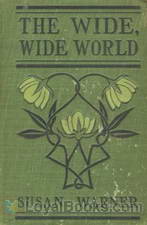 The Wide, Wide World
The Wide, Wide World
“How should a seven year old child react when forced to be separated from a mother who meant everything to her? How should she react when she learns that the aunt with whom she was sent to live doesn’t really care about her? Will she be able to make real friendships with people outside her family? Would she be able to take her belief in God as a comfort? If you want to find answers to all these questions, read the enjoyable novel “The Wide, Wide World”. There, you will see how the amazing Ellen Montgomery reacts to all those things, and many, many more”. | |
 Nobody
Nobody
There are many romantic tales about a handsome and rich man falling in love with a beautiful lower class woman over the objections of his family. Remember Elizabeth Bennett and Fitzwilliam Darcy? however, it takes more than a good woman to secure a man's happiness. He has to have mental strength. It is not certain that our hero, Tom, has that. Lois is a great woman. However, according to his sister, she is a "nobody." Does money and position control everything? Certainly not. Good people deserve to be happy... | |
By: Tatian | |
|---|---|
 Diatessaron: A Harmony of the Four Gospels
Diatessaron: A Harmony of the Four Gospels
The Diatessaron is such an impersonal work that we do not need to know very much about its compiler. It will suffice here to say that he tells us himself that he was born "in the land of the Assyrians," and brought up a heathen. After travelling in search of knowledge, he settled at Rome, where he became a pupil of Justin Martyr, professed Christianity, and wrote in Greek his Address to the Greeks, translated in vol. iii. of the Ante-Nicene Christian Library. He was too independent in his attitude to maintain a permanent popularity, and after Justin's death left Rome and returned to Mesopotamia... | |
By: Tertullian | |
|---|---|
 Shorter Works of Tertullian Volume 1
Shorter Works of Tertullian Volume 1
"In the latter part of the second and in the former part of the third century there flourished at Carthage the famous Tertullian, the first Latin writer of the church whose works are come down to us. All his writings betray a sour, monastic, harsh, and severe turn of mind. "Touch not, taste not, handle not," might seem to have been the maxims of his religious conduct. The abilities of Tertullian, as an orator and a scholar, are far from being contemptible, and have doubtless given him a reputation to which his theological knowledge by no means entitles him... | |
 Apology
Apology
In this work Tertullian defends Christianity, demanding legal toleration and that Christians be treated as all other sects of the Roman Empire. His most famous apologetic work, written in Carthage in the summer or autumn of AD 197. | |
By: The Gawain Poet | |
|---|---|
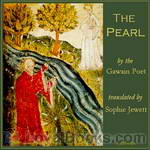 Pearl
Pearl
Written in the 14th century by the Gawain poet, 'Pearl' is an elegiac poem reflecting on the death of a young daughter, pictured as a pearl lost in a garden. It is considered a masterpiece of Middle English verse, incorporating both the older tradition of alliterative poetry as well as rhyme, centered around the development of an intricately structured image. Sophie Jewett's translation from the Northern dialect of the original renders much of the poem's liveliness and beauty accessible to modern readers, whilst encouraging them to pursue their reading further, to read the original itself.This recording is dedicated to the memory of Pearl Jean Shearman, 1914-2012. | |
By: The Parliament of England | |
|---|---|
 Book of Common Prayer, 1662: selections
Book of Common Prayer, 1662: selections
The Book of Common Prayer has for nearly 500 years provided the basis for Anglican and allied worship, not only in its English home but many countries around the world. Following England's break from Rome in 1534, a need was felt for a single order of worship - in English rather than the traditional Latin - to be used in churches throughout the country. BCP first appeared in 1549 during the reign of Edward VI, was abolished under Mary and was re-introduced with modifications by Elizabeth I in 1559... | |
By: The Sisters of Notre Dame | |
|---|---|
 Leading Events in the History of the Church: Part 1 - Christian Antiquity
Leading Events in the History of the Church: Part 1 - Christian Antiquity
The first volume in a series of Catholic Church history books written for children. Volume 1 covers the time period from after Our Lord's death till the 5th Century. | |
By: The Venerable Bede (673-735) | |
|---|---|
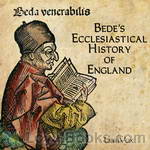 Ecclesiastical History of England
Ecclesiastical History of England
Bede's Ecclesiastical History of England is a work in Latin by Bede on the history of the Christian Churches in England, and of England generally; its main focus is on the conflict between Roman and Celtic Christianity. It is considered to be one of the most important original references on Anglo-Saxon history. It is believed to have been completed in 731, when Bede was approximately 59 years old. Divided into five books, it covers the history of England, ecclesiastical and political, from the time of Julius Caesar to the date of its completion (731)... | |
 Explanation of the Apocalypse
Explanation of the Apocalypse
The Explanation of the Apocalypse by Ven. Beda is the earliest of the many works of our own writers on that Book, and, as such, may well deserve to appear in a form accessible to English readers.The chief characteristics of Beda's method of exposition may be thus stated. The several visions are considered not to be successive, but contemporaneous, with occasional recapitulations and to represent the condition of the Church in all ages, under different aspects. The thousand years, in the twentieth chapter, are interpreted of the present period of the Church's existence, in accordance with the opinion of St Augustine, in the second part of his De Civitate Dei... | |
By: Theodor Herzl (1860-1904) | |
|---|---|
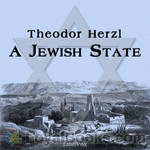 A Jewish State
A Jewish State
Read in English, this is a pivotal document in the history of Zionism and the State of Israel. Herzl designed this work to elevate the discussion of "the Jewish Question" so it would "no longer take the form of violent abuse or sentimental vindication but of a debate, practical, large, earnest, and political." While few of Herzl's proposals were actually carried out, the importance of A JEWISH STATE was in the groundswell of support for a Jewish homeland engendered by its solutions to the practical problems of establishing a new state... | |
By: Theodoret of Cyrus | |
|---|---|
 Commentary on Romans
Commentary on Romans
Theodoret was born at Antioch, A.D. 386. His studies were pursued under Theodore of Mopsuista and Chrysostom, from the works of the latter of whom the present commentary is by many esteemed little more than an abridgement. This, however, on comparing the writings of both those Fathers, can hardly perhaps be admitted in its fullest sense. "Of all the Fathers, who have composed works of different kinds, Theodoret is one of those who has been very happy in every one of them. There are some who have been excellent writers in matters of controversy, but bad interpreters... | |
By: Théodule Ribot (1839-1916) | |
|---|---|
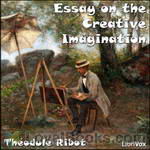 Essay on the Creative Imagination
Essay on the Creative Imagination
“It is quite generally recognized that psychology has remained in the semi-mythological, semi-scholastic period longer than most attempts at scientific formulization. For a long time it has been the “spook science” per se, and the imagination, now analyzed by M. Ribot in such a masterly manner, has been one of the most persistent, apparently real, though very indefinite, of psychological spooks. Whereas people have been accustomed to speak of the imagination as an entity sui generis, as a... | |
By: Thomas Boston (1676-1732) | |
|---|---|
 Crook in the Lot; or, The Sovereignty and Wisdom of God, in the Afflictions of Men, Displayed
Crook in the Lot; or, The Sovereignty and Wisdom of God, in the Afflictions of Men, Displayed
A meditation on Ecclesiastes 7:3, "Consider the work of God: for who can make that straight which he hath made crooked?," The Crook in the Lot considers the purposes of God for suffering and affliction in the life of the Christian. -Summary by Chris Bunn | |
 Paraphrase Upon the Epistle of Paul to the Galatians
Paraphrase Upon the Epistle of Paul to the Galatians
The "Paraphrase on the Epistle to the Galatians" was written in his younger years, while he was minister of Simprin, for his own improvement, and not with any design of printing it; though, it is hoped, the publication of it now may be for the edification of the church of Christ. - Summary adapted from Advertisement | |
By: Thomas Browne | |
|---|---|
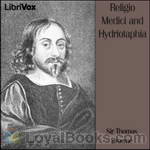 Religio Medici and Hydriotaphia
Religio Medici and Hydriotaphia
Religio Medici (The Religion of a Doctor) sets out Sir Thomas Browne's spiritual testament as well as being an early psychological self-portrait. In its day, the book was a European best-seller. It was published in 1643 by the newly-qualified physician, and its unorthodox views placed it swiftly upon the Papal Index Librorum Prohibitorum in 1645. Although predominantly concerned with Christian faith, the Religio also meanders into digressions upon alchemy, hermetic philosophy, astrology, and physiognomy... | |
By: Thomas Bulfinch (1796-1867) | |
|---|---|
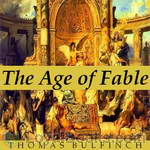 Bulfinch's Mythology: The Age of Fable
Bulfinch's Mythology: The Age of Fable
Bulfinch’s Mythology, first published in 1855, is one of the most popular collections of mythology of all time. It consists of three volumes: The Age of Fable, The Age of Chivalry, and Legends of Charlemagne. This is a recording of the tenth edition of the first volume, The Age of Fable. It contains many Greek and Roman myths, including simplified versions of The Iliad and The Odyssey, as well as a selection of Norse and “eastern” myths. Thomas Bulfinch’s goal was to make the ancient myths accessible to a wide audience, and so it is suitable for children. | |
By: Thomas Chalmers (1780-1847) | |
|---|---|
 Lectures on Butler's Analogy
Lectures on Butler's Analogy
Thomas Chalmers had read, when a young man, several infidel productions. Their semblance of logic and learning, and supercilious confidence of style, disposed him to regard all religion as mere superstition. His mind was poisoned. Accustomed as he had been to the positive and precise reasonings of mathematics, he could not find similar proofs for Christianity. But he was induced, by some friends, to study Butler’s Analogy. This, as he expresses it, took Christianity “out of the class of unlikelihoods... | |
 Discourses on the Christian Revelation Viewed in Connection with the Modern Astronomy
Discourses on the Christian Revelation Viewed in Connection with the Modern Astronomy
The astronomical objection against the truth of the Gospel, does not occupy a very prominent place in any of our Treatises of Infidelity. It is often, however, met with in conversation — and we have known it to be the cause of serious perplexity and alarm in minds anxious for the solid establishment of their religious faith. There is an imposing splendour in the science of Astronomy; and it is not to be wondered at, if the light it throws, or appears to throw, over other tracks of speculation than those which are properly its own, should at times dazzle and mislead an inquirer... | |
By: Thomas Cooper (1805-1892) | |
|---|---|
 The Bridge of History Over the Gulf of Time: A Popular View of the Historical Evidence for the Truth of Christianity
The Bridge of History Over the Gulf of Time: A Popular View of the Historical Evidence for the Truth of Christianity
Written by the former skeptic, poet, and scholar, Thomas Cooper, The Bridge of History Over the Gulf of Time admirably sets forth a winsome defense of Christianity. Written as the substance of fourteen years of lectures, at the request of his hearers, Cooper leads his reader across the bridge of history, through the centuries, tracing Christianity. At last, he addresses "Leben Jesu" by Dr. David Friedrich Strauss, discusses the historicity of the four Gospels, and offers some concluding evidences for the truth of Christianity. (Introduction by tzieger) | |
By: Thomas De Witt Talmage (1832-1902) | |
|---|---|
 Abominations of Modern Society
Abominations of Modern Society
| |
 Old Wells Dug Out
Old Wells Dug Out
Thomas DeWitt Talmage was born in Bound Brook, New Jersey. He earned an undergraduates degree at the University of the city of New York, now known as New York University. After his graduation he studied law, but ultimately decided on the ministry. He pastored a church in Philadelphia and spoke in many other places including England and New York. This book contains 33 of his sermons all of them well worth a read or listen! They are full of encouragement and thought provoking comments. | |
 Twenty-five Sermons on The Holy Land
Twenty-five Sermons on The Holy Land
When Rev. T. DeWitt Talmage went to visit the Holy Land, he wrote sermons for his home church and sent them back to be read. It resulted in this wonderful collection of sermons exploring in depth the places he visited, explaining their significance both in the past and present, describing what he saw and how he felt. As well as what happened there in biblical times, all the while expanding on that and teaching valuable lessons about Christ and how he is just as real today as he was when he walked the Earth in physical form... | |
By: Thomas Erskine (1788-1870) | |
|---|---|
 Unconditional Freeness of the Gospel
Unconditional Freeness of the Gospel
This is a work of theology which addresses a seeming contradiction in Christian thought: that love and forgiveness are freely offered to all, but they cannot be accepted without a major change in the receiver's heart. Along the way, the author explains what he believes justification to be--not a judicial act of God, but rather a description of the state of the believer. He also goes into detail on why our pride makes it difficult to accept God's love. -Summary by Devorah Allen | |
By: Thomas G. Crippen (1841-1930) | |
|---|---|
 Christmas and Christmas Lore
Christmas and Christmas Lore
For above forty years I have been a diligent collector of history, tradition, legend, custom, or folklore, whether from familiar or unfamiliar sources, relating to the festival of the Holy Nativity. Moreover, I have gathered copiously from scarce pamphlets of the 17th and 18th centuries, from old chapbooks, newspaper paragraphs, and magazine articles old and new, and from contact with rustics in several counties. The fruits of my gathering are briefly summarized in the following pages, in the hope that they may conduce to that "joy and pious mirth" wherewith we ought, all of us, to commemorate the best and greatest Gift of God to man. - Summary by from the Preface | |
By: Thomas Goodwin (1600-1680) | |
|---|---|
 Man's Restoration by Grace
Man's Restoration by Grace
A discourse of the several parts which the three persons of the Godhead bear in the accomplishment of our salvation, and that they have taken on them several works appropriate to them therein.—And the distribution of our salvation into three parts, according to the number of the three persons, and the part which each of them have taken therein, viz., the Father in election, the Son in redemption and justification, the Holy Ghost in sanctification and application. - Summary by Preface | |
By: Thomas Guthrie (1803-1873) | |
|---|---|
 Plea for Ragged Schools; or, Prevention Better than Cure
Plea for Ragged Schools; or, Prevention Better than Cure
The Reverend Thomas Guthrie was first introduced to the idea of ragged schools in 1841, while acting as the Parish Minister of St. John's Church in Edinburgh. On a visit to Portsmouth, he saw a picture of John Pounds and felt inspired and humbled by the crippled cobbler's work. Pounds had been injured in a shipbuilding accident at the age of 15. He later became a shoemaker and, in 1818, he began teaching poor children without charging fees. He actively recruited children and young people to his school, spending time on the streets and quays making contact and even bribing them to come with the offer of baked potatoes... | |
By: Thomas H. Burgoyne (1855-1894) | |
|---|---|
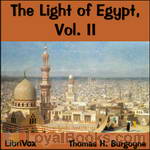 The Light of Egypt, vol II
The Light of Egypt, vol II
"The Light of Egypt" will be found to be an Occult library in itself, a textbook of esoteric knowledge, setting forth the "wisdom Religion" of life, as taught by the Adepts of Hermetic Philosophy. It will richly repay all who are seeking the higher life to carefully study this book, as it contains in a nutshell the wisdom of the ages regarding man and his destiny, here and hereafter. The London and American first edition, also the French edition, Vol. I, met with lively criticism from Blavatsky Theosophists, because it annihilates that agreeable delusion of "Karma" and "Reincarnation" from the minds of all lovers of truth for truth's sake. | |
By: Thomas Heyden (1798-1870) | |
|---|---|
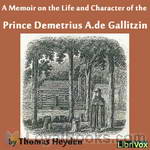 A Memoir on the Life and Character of the Rev. Prince Demetrius A. de Gallitzin
A Memoir on the Life and Character of the Rev. Prince Demetrius A. de Gallitzin
Prince Demetrius of Gallitzin (1770-1840), or "Father Smith," as he was known on the eighteenth century American frontier, was one of the glories of early Catholicism in America. Though a prince by birth, Demetrius discreetly concealed the glory of his earlier life that he might better lead his adopted spiritual children to the glory of eternal life. For more than four decades, he humbly provided for the spiritual needs of courageous pioneers scattered throughout the Allegheny Mountains of central Pennsylvania... | |
By: Thomas Jefferson (1743-1826) | |
|---|---|
 Jefferson Bible - The Life and Morals of Jesus of Nazareth
Jefferson Bible - The Life and Morals of Jesus of Nazareth
The Life and Morals of Jesus of Nazareth, commonly referred to as the Jefferson Bible, was a book constructed by Thomas Jefferson in the later years of his life by cutting and pasting with a razor and glue numerous sections from the New Testament as extractions of the doctrine of Jesus. Jefferson's condensed composition is especially notable for its exclusion of all miracles by Jesus and most mentions of the supernatural, including sections of the four gospels that contain the Resurrection and most other miracles, and passages that portray Jesus as divine. - Summary by Wikipedia | |
By: Thomas Kelly Cheyne (1841-1915) | |
|---|---|
 The Reconciliation of Races and Religions
The Reconciliation of Races and Religions
“The primary aim of this work is twofold,” writes Thomas K. Cheyne. “It would fain contribute to the cause of universal peace, and promote the better understanding of the various religions which really are but one religion. The union of religions must necessarily precede the union of races, which at present is so lamentably incomplete…. I have endeavoured to study the various races and religions on their best side, and not to fetter myself to any individual teacher or party, for ‘out of His fullness have all we received... | |
By: Thomas Paine (1737-1809) | |
|---|---|
 Age of Reason (version 2)
Age of Reason (version 2)
The Age of Reason; Being an Investigation of True and Fabulous Theology is a pamphlet, written by a British and American revolutionary Thomas Paine. The Age of Reason challenges institutionalized religion and challenges the legitimacy of the Bible, the central sacred text of Christianity. Published in three parts in 1794, 1795, and 1807, it was a bestseller in the United States, where it caused a short-lived deistic revival. Part 1 was written sometime in 1793, and attacks the concepts of divine revelation and inspiration... | |
By: Thomas Scott (1747-1821) | |
|---|---|
 Hosea: from The Holy Bible with Original Notes
Hosea: from The Holy Bible with Original Notes
Hosea, whose prophecy we now enter upon, exercised his sacred office for a great many years: he predicted the captivity of the ten Tribes long before it arrived, yet he probably lived to witness its near approach. He is supposed to have been of the kingdom of Israel, though his prophecies frequently relate to Judah also His style is remarkably concise, sententious, and unconnected, though some parts are peculiarly pathetic, animated, and sublime. His general scope was to convince his people of their exceeding sinfulness, and to warn them by the terror, and lead them by the goodness, of God to repentance. - Summary by Introduction | |
By: Thomas Traherne (1636-1674) | |
|---|---|
 Centuries of Meditations
Centuries of Meditations
Thomas Traherne's best known work is a collection of paragraphs, divided into what he called "Centuries", meditating in a particularly intense and visionary manner on God, nature and His relationship with the life of man. | |
By: Thomas Whittaker (1856-1935) | |
|---|---|
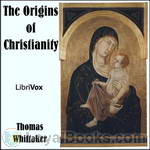 The Origins of Christianity
The Origins of Christianity
The full title of this book is The Origins of Christianity with an Outline of Van Manen’s Analysis of The Pauline Literature. Willem Christiaan van Manen (1842-1905) was a Dutch theologian. The vast majority of van Manen’s radical criticism of the New Testament and Christian origins has never been translated into English.In this book, Thomas Whittaker outlines the arguments of van Manen for an English-speaking audience. Van Manen’s work is not now generally known, but his views obtained notoriety by the articles and books that he wrote, in which he maintained that none of the Epistles that bear the Apostle Paul’s name were in fact written by him... | |
By: Thornton Chase | |
|---|---|
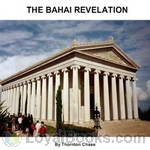 The Bahai Revelation
The Bahai Revelation
Thornton Chase (1847 – 1912) is commonly recognized as the first convert to the Bahá’í Faith of Occidental background. During his life he organized many Bahá’í activities in Chicago and Los Angeles and was considered a prominent Bahá’í. In 1894, Chase met Ibrahim Kheiralla, a Bahá’í from Beirut who had recently come to the United States. Chase and a small group of Chicagoans began to study the Bahá’í Faith with him. By 1895 he had completed the class and become a Bahá’í... | |
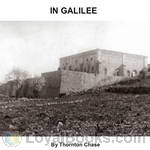 In Galilee
In Galilee
Thornton Chase (1847 – 1912) is commonly recognized as the first convert to the Bahá’í Faith of Occidental background. During his life he organized many Bahá’í activities in Chicago and Los Angeles and was considered a prominent Bahá’í. In 1907 Chase was able to go on pilgrimage. Though Chase was able to be with `Abdu’l Bahá in Akka for only three days, the experience transformed him. `Abdu’l Bahá, highly impressed by Chase’s qualities, conferred on him the title Thábit, “steadfast... | |
By: Twentieth Century New Testament | |
|---|---|
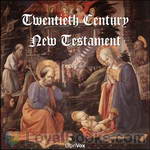 Twentieth Century New Testament
Twentieth Century New Testament
Published in 1904, The Twentieth Century New Testament is considered the first translation of the Bible into modern English. It was produced in Britain over a period of 15 years by approximately 20 people -- ministers, housewives, school teachers and businessmen -- who were united by their desire for a New Testament in the language of the people. They were advised by such scholars as J. Rendel Harris and Richard Weymouth so their rendering is quite accurate. In addition they made some effort at rearranging the New Testament books in the order scholars believe they were written -- Mark comes before Matthew, for instance... | |
By: Ukawsaw Gronniosaw (c.1705-1775) | |
|---|---|
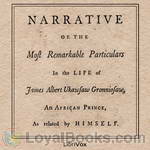 A Narrative of the Most Remarkable Particulars in the Life of James Albert Ukawsaw Gronniosaw
A Narrative of the Most Remarkable Particulars in the Life of James Albert Ukawsaw Gronniosaw
Ukawsaw Gronniosaw, also known as James Albert, (born ca. 1705 - 1775) was a freed slave and autobiographer. His autobiography is considered the first published by an African in Britain. Gronniosaw's autobiography was produced in Kidderminster in the late 1760s. Its full title is A Narrative of the Most remarkable Particulars in the Life of James Albert Ukawsaw Gronniosaw, an African Prince, As related by himself. It was the first Slave narrative in the English language. Published in Bath in 1772, it gives a vivid account of Gronniosaw's life, from his capture in Africa through slavery to a life of poverty in Colchester and Kidderminster... | |
By: Unknown | |
|---|---|
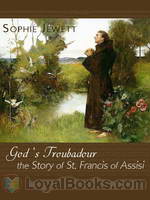 God's Troubadour, The Story of St. Francis of Assisi
God's Troubadour, The Story of St. Francis of Assisi
Francis, a young Italian boy, is a merchant’s son who is enthralled by the troubadour songs and tales of knights that his father brings back from his travels. He decides to become a knight, but after seeing the poor and suffering in the tragedies of war, he decides to give away all of his worldly possessions and become a troubadour for God. | |
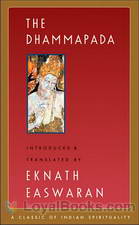 The Dhammapada
The Dhammapada
The Dhammapada is is a Buddhist scripture, containing 423 verses in 26 categories. According to tradition, these are verses spoken by the Buddha on various occasions, most of which deal with ethics. It is is considered one of the most important pieces of Theravada literature. Despite this, the Dhammapada is read by many Mahayana Buddhists and remains a very popular text across all schools of Buddhism. – Excerpted from Wikipedia | |
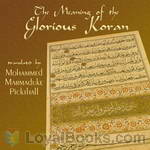 The Meaning of the Glorious Koran
The Meaning of the Glorious Koran
The Koran (Qur’an) is regarded by Muslims as the word of God (Allah) as revealed to the prophet Muhammad. It is divided into 114 chapters (surahs), arranged roughly by length. This version, The Meaning of the Glorious Koran, is a widely used English translation of the Koran by a Muslim Englishman. Many Muslims, however, including Pickthall, believe that true translations of the Koran from the original Arabic are impossible, and see translations into other languages only as useful interpretations. | |
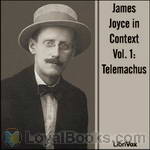 James Joyce in Context: Telemachus
James Joyce in Context: Telemachus
Collection of various works which James Joyce quotes and references to in his epic novel Ulysses, and provides them in audio form. Perfect for Joyce scholars, fans, and aficionados! | |
 The First Book of Adam and Eve
The First Book of Adam and Eve
The Conflict of Adam and Eve with Satan is a Christian pseudepigraphical work found in Ge’ez, translated from an Arabic original and thought to date from the 5th or 6th century AD. It was first translated from the Ethiopic version into German by August Dillmann. It was first translated into English by S. C. Malan from the German of Ernest Trumpp. The first half of Malan’s translation is included as the “First Book of Adam and Eve” and the “Second Book of Adam and Eve” in The Lost Books of the Bible and the Forgotten Books of Eden... | |
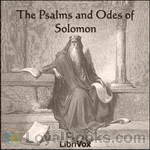 The Psalms and Odes of Solomon
The Psalms and Odes of Solomon
One of the Pseudepigrapha, the Psalms of Solomon is a group of eighteen psalms (religious songs or poems) that are not part of any scriptural canon (they are, however, found in copies of the Peshitta). The Psalms of Solomon were referenced in Early Christian writings, but lost to modern scholars until a Greek manuscript was rediscovered in the 17th century. Politically, the Psalms of Solomon are anti-Maccabee, and some psalms in the collection show a clear awareness of the Roman conquest of Jerusalem under Pompey in 63 BCE, metaphorically treating him as a dragon who had been sent by God to punish the Maccabees... | |
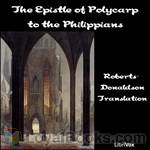 The Epistle of Polycarp to the Philippians
The Epistle of Polycarp to the Philippians
Polycarp’s Letter to the Philippians (often simply called To the Philippians) composed around 110 to 140 AD [1] is described by Irenaeus as follows: There is also a forceful epistle written by Polycarp to the Philippians, from which those who wish to do so, and are anxious about their salvation, can learn the character of his faith, and the preaching of the truth. (J. Stevenson, A new Eusebius [London: SPCK, 1965] p. 120) This is one quote from the epistle: “Stand fast, therefore, in this conduct... | |
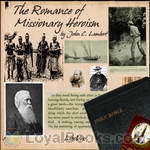 The Romance of Missionary Heroism
The Romance of Missionary Heroism
The title page gives this book the subtitle, “True stories of the intrepid bravery and stirring adventures of missionaries with uncivilized man, wild beasts, and the forces of nature in all parts of the world.” The thrilling accounts in this collection include stories of Jacob Chamberlain’s medical ministry in India, the dangers faced by Alexander Mackay in Uganda, James Chalmers’ work among the headhunters of New Guinea, John Paton’s mission to the South Sea cannibals, and the Hawaiian queen Kapiolani’s challenge to the gods of the volcano... | |
 Three Ecumenical Creeds
Three Ecumenical Creeds
MANUAL OF SURGERY, OXFORD MEDICAL PUBLICATIONSBY ALEXIS THOMSON, F.R.C.S.Ed.PREFACE TO SIXTH EDITION Much has happened since this Manual was last revised, and many surgical lessons have been learned in the hard school of war. Some may yet have to be unlearned, and others have but little bearing on the problems presented to the civilian surgeon. Save in its broadest principles, the surgery of warfare is a thing apart from the general surgery of civil life, and the exhaustive literature now available on every aspect of it makes it unnecessary that it should receive detailed consideration in a manual for students... | |
 Book of Enoch
Book of Enoch
The Book of Enoch, is an ancient, non-canonical Jewish work. Estimates vary on the actual dates of authorship. However, Enoch was alive during the Antediluvian period as recorded in the Hebrew Bible. Fragments of the text, were discovered in cave 4 of the Qumran caves in 1948. Enoch, born in the 7th generation from Adam, was the grandfather of Noah. Enoch prophesied concerning the judgments on mankind . Enoch says his prophetic words were not for his generation but for a “generation of elect and righteous people far in the future that would be living in the day of tribulation when all the wicked and godless are to be removed... | |
 Didache: The Teaching of the Twelve Apostles
Didache: The Teaching of the Twelve Apostles
This short treatise was accounted by some of the Fathers as next to Holy Scripture. It was rediscovered in 1873 by a Greek Orthodox metropolitan of Nicomedia, in the codex from which, in 1875, he had published the full text of the Epistles of St. Clement. An old Latin translation was found in 1900. For convenience the contents may be divided into three parts: the first is the "Two Ways", the Way of Life and the Way of Death; the second part is a rituale dealing with baptism, fasting, and Holy Communion; the third speaks of the ministry... | |
 Dhammapada (Version 3)
Dhammapada (Version 3)
The Dhammapada collects sayings of the Buddha, offering advice on how to live a full and thoughtful life. The translation used for this recording is by Friedrich Max Müller and was first published in the 19th century. - Summary by Newgatenovelist | |
By: Unknown; | |
|---|---|
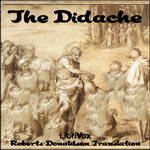 The Didache
The Didache
The Didache is the common name of a brief early Christian treatise (dated by most scholars to the late first or early second century), containing instructions for Christian communities. The text, parts of which may have constituted the first written catechism, has three main sections dealing with Christian lessons, rituals such as baptism and eucharist, and Church organization. It was considered by some of the Church Fathers as part of the New Testament but rejected as spurious or non-canonical by others, eventually not accepted into the New Testament canon with the exception of the Ethiopian Orthodox Church “broader canon... | |
By: Upton Sinclair (1878-1968) | |
|---|---|
 The Profits of Religion
The Profits of Religion
The Profits of Religion: An Essay in Economic Interpretation is a non-fiction book by the American novelist and muckraking journalist Upton Sinclair, first published in 1917. It is a snapshot of the religious movements in the U.S. before its entry into World War I. In this book, Sinclair attacks institutionalized religion as a "source of income to parasites, and the natural ally of every form of oppression and exploitation." | |